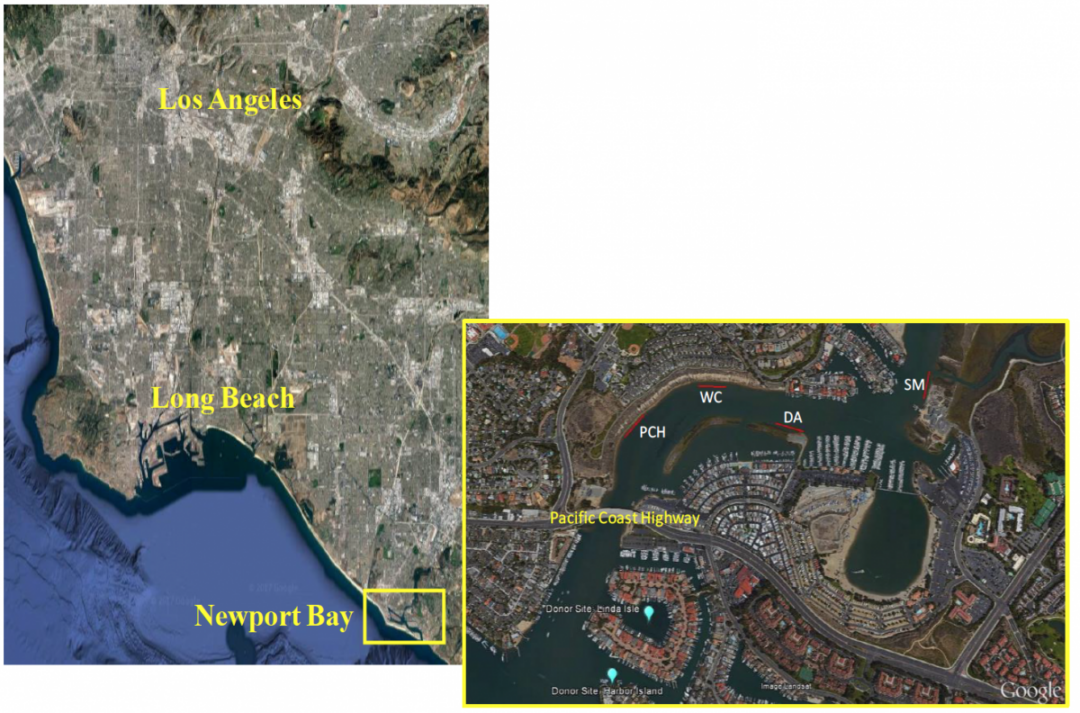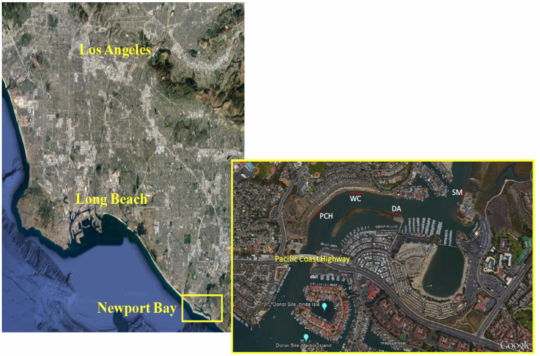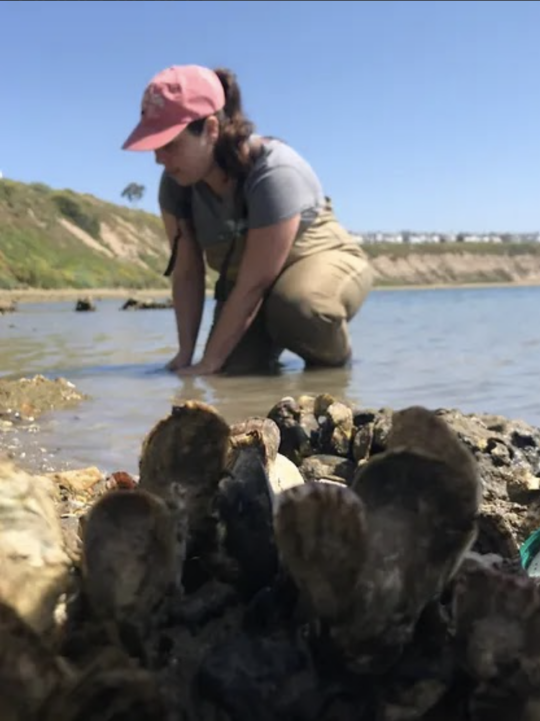Examining the effects of pollutants on oysters to inform estuary restoration efforts
In California, only 10% of estuaries remain, and they are often degraded near urbanized areas such as Upper Newport Bay (UNB), a 1000-acre estuary south of Los Angeles. Oysters are an ecologically and economically important species, and understanding whether contaminants in these estuaries further impact oyster species can increase knowledge of oyster population health as well as risks of consumption. University of Southern California (USC) Sea Grant funded a study to inform future restoration efforts for the native Olympia Oyster. Using four UNB study sites, researchers evaluated the presence of pollutants in oysters and nearby sediment and assessed differentially expressed genes in response to pollution stress.
Key Results:
- Types and concentrations of pollutants in native Olympia oyster and non-native Pacific oyster tissues vary by estuary
- The greatest concentration of pollutants was organochlorine pesticides and paralleled the concentrations in nearby sediments
- Conversely, there were often differences in the metal concentrations detected in oysters relative to the sediment collected in the same estuary.
- Extremely high levels of PCBs were observed in oysters and sediment in San Diego Bay; levels of copper detected in the sediment from Alamitos Bay and San Diego Bay exceeded toxicity thresholds for benthic communities.
- Findings support research that the non-native Pacific oyster species is more tolerant to stressors.
- Both oyster species show differential expression of toxicology-specific biomarkers corresponding to increased contaminant burdens at a specific site.
- One of the first studies to develop and utilize genomic tools for the native Olympia oyster, fostering a better understanding of its biology and its response to environmental stressors beyond the laboratory
Project Impacts & Application:
- Will help inform consumption advisories for shellfish in Aqua Hedionda and San Diego Bay estuaries
- Will inform ongoing and future Olympia oyster restoration efforts regarding the environmental parameters and potential stressors at proposed restoration sites
- Provided presentations at the Society of Environmental Toxicology and Chemistry Annual Meeting; University of California Santa Barbara Restoration Ecology class; and World Wetlands Day with the Upper Newport Bay Conservancy
Principal Investigators:
Erika Holland, Ph.D., California State University, Long Beach
Christine Whitcraft, Ph.D., California State University, Long Beach
Funding:
NOAA, 2018-2020
Additional Info:
Access our Publications Database to view publications from this project or other related topics
Project Images
Living shoreline sites (red) in Upper Newport Bay, Newport Beach, CA, located south of Los Angeles, CA. Sites include Pacific Coastal Highway (PCH), Westcliff (WC), De Anza (DA), and Shellmaker (SM). At each site, one plot of each treatment of interest to the current proposal will be represented (i.e. oyster bed; oyster near eelgrass bed).



